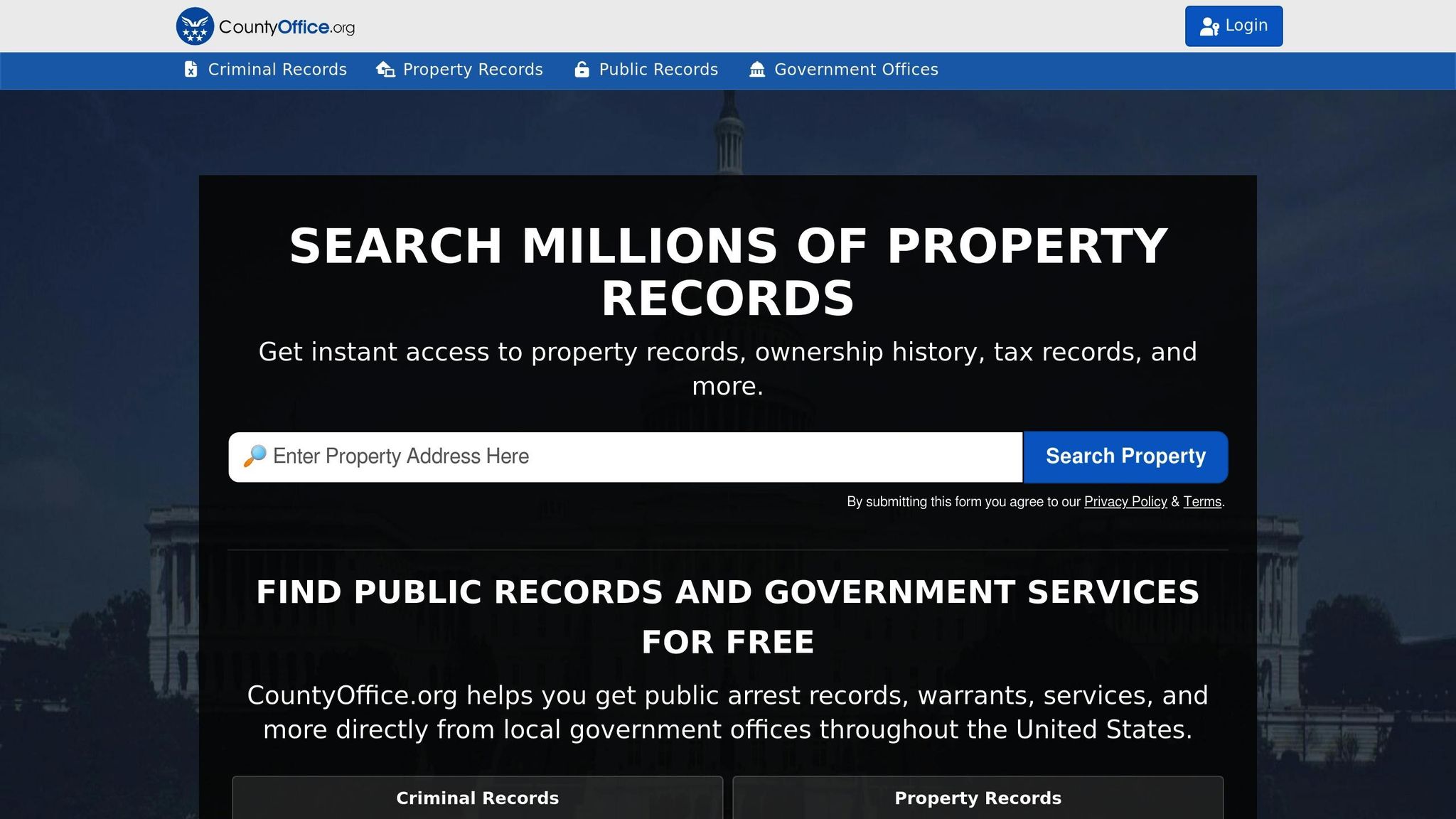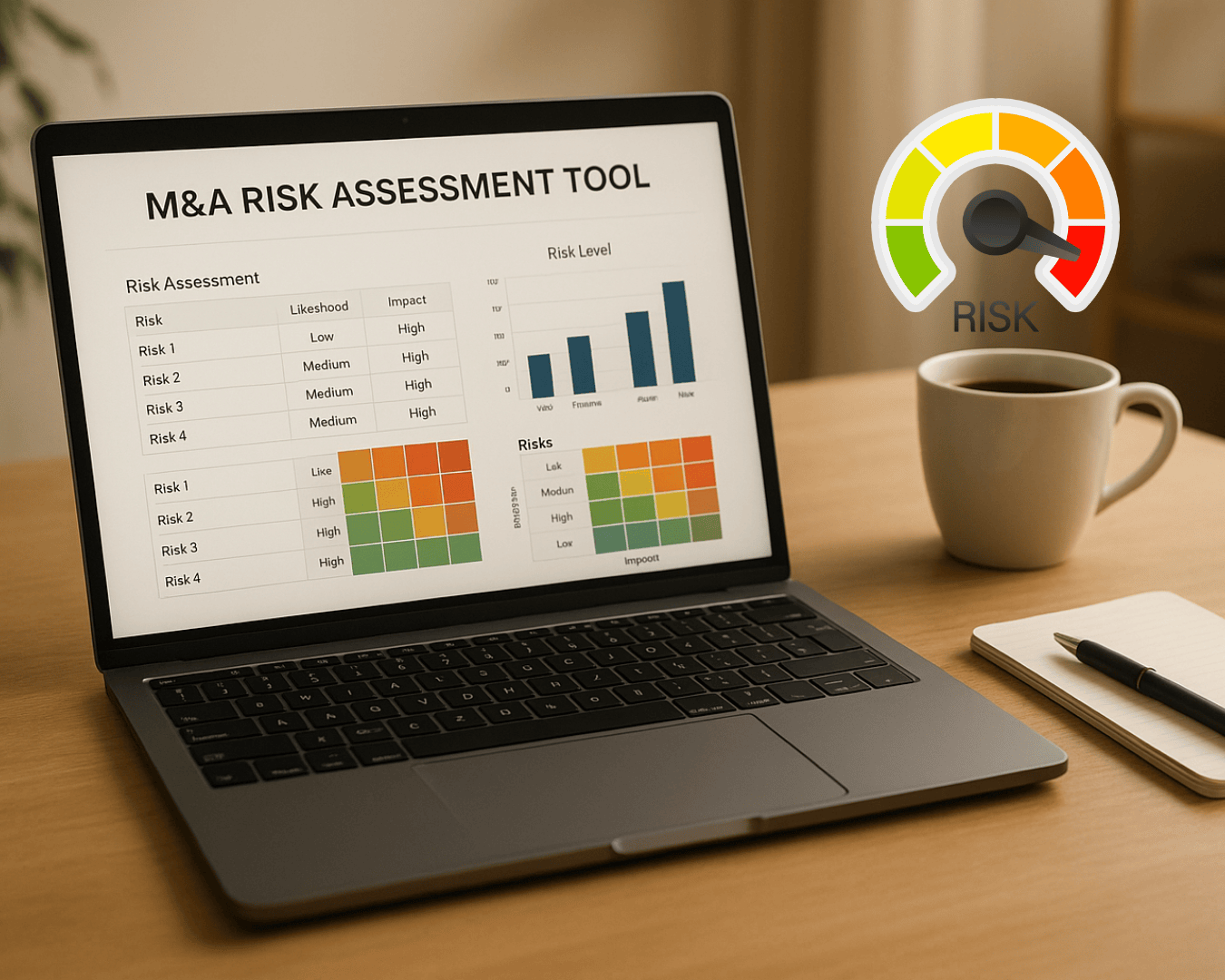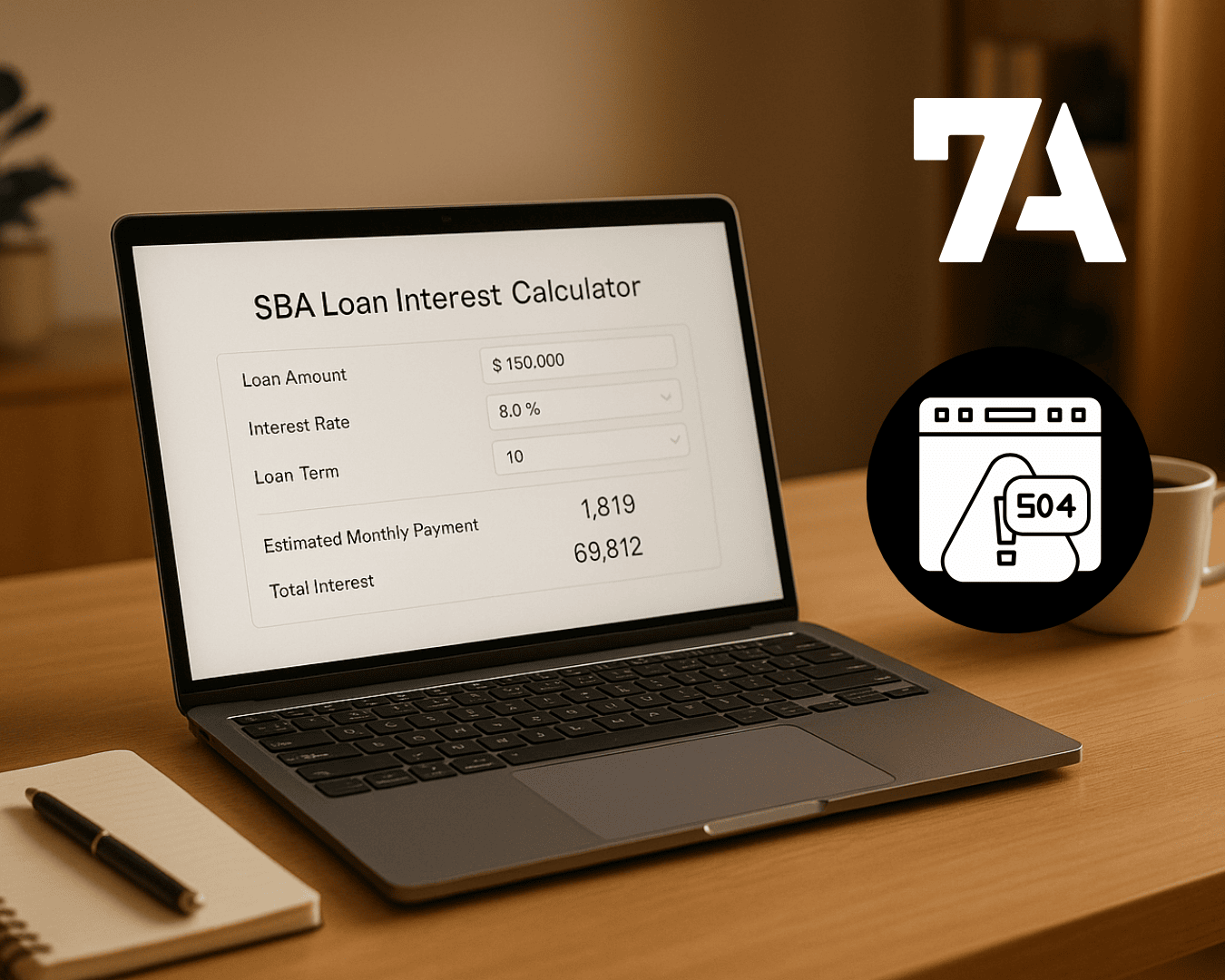When buyers fail to meet their financial obligations under a seller financing agreement, it can create serious challenges for sellers. These agreements, where sellers provide financing directly to buyers, rely on repayment schedules and collateral to protect the seller's investment. Defaults can result from missed payments, operational mismanagement, or economic downturns, leaving sellers exposed to financial risks.
Key takeaways:
- Default Clauses: Clearly define what constitutes a default and outline cure periods to allow buyers time to resolve issues.
- Common Causes of Default: Cash flow problems, lack of management expertise, over-leveraging, and external factors like economic downturns.
- Warning Signs: Late or partial payments, reduced communication, declining financial health, or neglected collateral.
- Risk Mitigation: Vet buyers thoroughly, require down payments, include protective covenants, and monitor post-sale performance.
- Default Remedies: Review contracts, negotiate or mediate disputes, and pursue legal options like arbitration, litigation, or repossession.
- Legal Considerations: State laws and contract structures affect enforcement options, making legal counsel essential.
Owner Financing: What If The Buyer Defaults? - CountyOffice.org

Common Causes and Warning Signs of Default
When buyers default on payments, the consequences for sellers can be severe. That’s why it’s so important to understand the reasons behind defaults and recognize the early warning signs. Spotting trouble early gives sellers the chance to protect their investment and possibly avoid a complete default.
Why Buyers Default on Payments
One of the main reasons buyers default is overestimating their financial capabilities. They often rely on overly optimistic projections, only to face operational hurdles and cash flow shortages later on. This issue is especially common among buyers who are new to running a business or who underestimate the challenges of managing an existing operation.
Cash flow problems are the leading cause of payment defaults. Seasonal revenue fluctuations, the loss of key customers during the transition, or unexpected expenses can quickly drain a buyer’s working capital. Newly acquired businesses, especially those under inexperienced management, are particularly vulnerable to these kinds of disruptions.
Lack of expertise also plays a major role. Even when buyers have the financial means to purchase a business, insufficient industry knowledge or poor management skills can lead to declining revenues, making it harder to meet payment obligations.
Taking on too much debt is another common issue. Some buyers stack additional loans - like those for equipment, working capital, or personal guarantees - on top of their seller-financed agreements. Rising borrowing costs can make it nearly impossible for these buyers to keep up with multiple financial commitments.
External factors, such as economic downturns, industry-specific struggles, or broader uncertainties, can also create significant challenges. Understanding these financial and operational pressures is key to identifying early warning signs of default.
Early Warning Signs of Potential Default
Sellers should pay close attention to how buyers handle payments and communication. Late or partial payments are often the first visible red flags. Even a small delay can hint at underlying cash flow problems.
Changes in communication habits can also signal trouble. If a buyer who was once responsive suddenly becomes difficult to reach, it might indicate they’re avoiding conversations about financial difficulties. Similarly, frequent excuses for minor delays could point to bigger issues on the horizon.
Financial indicators, like a drop in credit ratings, provide another layer of insight into a buyer’s financial health. Sellers should also stay informed about broader economic trends and industry challenges, as these can foreshadow payment difficulties.
Behavioral changes are another warning sign. For example, if a buyer starts cutting inventory, laying off staff, or deferring maintenance on equipment, it could indicate financial distress - even before loan payments are directly impacted. Neglecting collateral maintenance is another concerning sign, emphasizing the importance of regular oversight.
| Economic Indicator | Impact on Buyer's Ability to Pay |
|---|---|
| GDP Contraction | Lower revenue |
| Rising Unemployment | Lower consumer demand |
| Stock Market Volatility | Decreased asset valuations |
| Interest Rate Hikes | Increased borrowing costs |
By keeping an eye on these indicators, sellers can act early to address potential issues.
How to Reduce Risks Before Default Happens
Preventing default is always better than dealing with the fallout. The first step is thorough buyer vetting. Sellers should evaluate the buyer’s industry experience, management skills, and financial stability to ensure they’re capable of handling the business.
Assessing creditworthiness and overall financial health is equally important. This includes reviewing the buyer’s financial history, current obligations, and ability to manage unexpected challenges.
Clear and detailed documentation is another critical safeguard. Seller financing agreements should outline payment schedules, define what constitutes a default, specify collateral, and include clear procedures for resolving issues. These details act as a guide for addressing problems before they escalate.
Ongoing financial monitoring helps sellers detect early warning signs. Structuring deals with protective measures - like requiring larger down payments, shorter payment terms, or personal guarantees - can also reduce risk. Adding performance milestones or financial covenants can provide additional safeguards if the business underperforms.
Regular inspections of collateral ensure that assets are being properly maintained according to the agreement. Lastly, open and respectful communication between sellers and buyers is crucial. Honest dialogue can help both parties address challenges collaboratively, protecting the seller’s investment while supporting the buyer’s success.
Step-by-Step Remedies for Seller Financing Defaults
When a default happens, quick action is essential to protect your investment. Here’s a breakdown of the steps you can take to address the situation.
Reviewing Contract Terms
Start by going over your contract carefully. This document is your guide to understanding what remedies are available to you.
Look for key clauses related to defaults, such as how they’re defined, the cure periods allowed, and any notice requirements. Many contracts give buyers a grace period - usually 10 to 30 days after receiving written notice - to fix the issue before more serious actions can be taken.
Pay close attention to how notices must be sent. Most agreements require written notice, often via certified mail. Missing these steps could weaken your position if the matter escalates.
Review the remedies section for options like acceleration clauses (which make the full remaining balance due immediately), repossession rights for collateral, or provisions for recovering attorney fees and other costs. Some contracts also include cross-default clauses, meaning a missed payment could trigger defaults on related agreements.
Negotiation and Mediation
If reviewing the contract doesn’t lead to a quick resolution, your next step is negotiation or mediation. These approaches are less costly and help maintain a working relationship with the buyer.
Start with direct negotiation. Pinpoint the root cause of the payment issue and explore options like extending deadlines, temporarily reducing payments, or accepting partial payments until the buyer’s financial situation improves.
If direct talks don’t work, consider mediation. A neutral third party can help both sides communicate and find a middle ground. Mediation does involve fees, but it’s often less expensive than legal action.
During mediation, focus on finding solutions rather than trying to “win” the dispute. Be open to creative fixes, such as offering credits, agreeing to repairs, or extending timelines, to help the buyer catch up on payments.
Legal Remedies: Arbitration, Litigation, and Repossession
When negotiation and mediation fail, legal remedies may be your only option. Depending on the situation, you can choose arbitration, litigation, or repossession.
Arbitration is a faster and more private process, provided the contract allows for it. However, keep in mind that the arbitrator’s decision is final, with very limited chances for appeal.
Litigation offers more comprehensive legal protections and enforcement options, including the ability to appeal if the outcome isn’t favorable. But it can be both time-consuming and expensive.
Repossession allows you to take back the collateral securing the debt. While this can be a quicker way to recover assets, you’ll need to follow strict legal procedures, including state-specific rules for notice, sale processes, and handling any surplus funds.
When deciding which legal remedy to pursue, consider the buyer’s financial situation. If they’re insolvent, repossession might recover more value than a lengthy court battle. On the other hand, if the buyer has other assets or income, litigation could allow you to recover more through options like wage garnishment or asset seizure.
sbb-itb-a3ef7c1
Legal Considerations and State-Specific Regulations
Understanding the legal aspects of seller financing defaults requires a grasp of how contract structures and state regulations shape your options. The rules governing these transactions differ widely across the U.S., making it essential to familiarize yourself with the laws specific to your state.
How Contract Structure Affects Remedies
The way your seller financing agreement is structured determines your available remedies. For instance, in the case of real estate or land contracts, the seller usually retains legal title until the buyer has completed all payments. This arrangement can simplify the recovery process, often allowing for forfeiture after proper notice is given. On the other hand, agreements involving promissory notes secured by deeds of trust transfer legal title to the buyer immediately, leaving the seller with a security interest. This setup often leads to more intricate foreclosure procedures if the buyer defaults.
Documentation also plays a critical role in ensuring compliance. For example, under the SAFE Act, sellers financing more than five properties annually may require licensing. In Texas, however, sellers making five or fewer owner-financed loans each year are exempt from licensing, thanks to the de minimis exemption under Finance Code Section 156.202(a). Additionally, interest rates must adhere to state usury laws to avoid penalties or losing the ability to collect interest altogether.
State-by-State Variations in Enforcement
State laws significantly influence how seller financing defaults are enforced. For example, in Washington state, transactions documented through real estate contracts follow a relatively straightforward forfeiture process. It begins with a Notice of Intent to Forfeit, and if the buyer doesn’t resolve the default, a second notice can be issued after 90 days to finalize the forfeiture. However, if the same transaction uses a promissory note and deed of trust, the foreclosure process becomes more complex and can take between 180 and 210 days, especially if the property serves as the buyer’s primary residence.
State-specific licensing rules and documentation requirements further impact enforcement. Some states enforce stricter residential lending controls, requiring specific notice formats, waiting periods, or delivery methods. Failing to meet these requirements could delay recovery efforts or weaken your legal standing.
Why You Need Legal Counsel
Given the complexities of seller financing defaults, seeking professional legal advice is not just helpful - it’s essential. Missteps in navigating these challenges can lead to costly errors, especially when dealing with federal rules like the Dodd-Frank Act’s "ability to repay" provisions. While many single-transaction sellers may not meet the definition of "creditors" under the Act, determining this status requires thorough legal analysis and proper documentation.
State-specific procedural nuances further highlight the importance of consulting an experienced attorney. Each state has unique notice requirements, timing rules, and documentation standards, and failing to follow them could invalidate your remedies or expose you to additional risks.
"Consult a qualified real estate attorney before entering into a sales contract calling for seller financing, and never use forms off the Internet to document such transactions." - David J. Willis, Attorney and Author
Engaging legal counsel early on is far more cost-effective than dealing with issues later. Attorneys can help structure your agreement to maximize remedy options and ensure compliance with all applicable laws. In cases involving cross-jurisdictional complexities - such as buyers in different states or properties spread across multiple locations - legal expertise is invaluable for coordinating enforcement efforts and managing varying requirements.
Considering the financial stakes involved, investing in competent legal representation can save time, reduce stress, and significantly improve your chances of a successful resolution.
Best Practices for Preventing and Managing Defaults
It's always better to prevent defaults than to deal with the fallout after they happen. Savvy sellers take proactive steps, from structuring deals carefully to keeping a close eye on things post-sale, to reduce risks and protect their investments.
Structuring Deals to Minimize Risk
The foundation of a low-risk deal starts with a detailed evaluation of the buyer. This includes digging into their credit history, income sources, and track record. Once that's done, structuring the deal strategically becomes key.
One of the most effective ways to minimize risk is through down payment requirements. For small business transactions, sellers often require at least a 50% down payment. Financing terms typically stretch between three and seven years. A significant down payment not only reduces the financial risk for the seller but also ensures the buyer is fully committed to the transaction.
"Give on price and take on terms…that's how. Sellers are most sensitive to price and buyers are most sensitive to the terms of the sellers' loan." - Bill Ham, Author of Real Estate Raw
Adding personal guarantees and collateral into the mix provides another layer of security. When buyers pledge personal assets or business assets like inventory, accounts receivable, or real estate as collateral, sellers have a safety net if things go south.
Cash flow alignment is another critical factor. Monthly payments should ideally stay within one-third of the business's annual cash flow. This conservative approach ensures the buyer has enough working capital to weather economic ups and downs.
Protective covenants in the financing agreement can also act as safeguards. These might include requirements for maintaining minimum cash reserves, carrying appropriate insurance, or submitting regular financial updates. Such measures not only protect the business's value but can also serve as early warning signs if trouble is brewing.
These initial steps lay the groundwork for effective management after the sale.
Post-Sale Monitoring and Documentation
Once the deal is done, active monitoring is crucial to catch potential issues early. Requiring buyers to submit regular financial reports - monthly or quarterly - helps sellers stay informed about cash flow trends and any emerging financial challenges.
Ensuring that buyers maintain comprehensive insurance coverage is another must. This protects both parties from risks such as fire, theft, or liability. Sellers can add an extra layer of protection by being listed as additional insured on these policies.
Regular communication is just as important as formal reporting. By staying in touch, sellers can quickly identify operational or market challenges before they spiral out of control. Additionally, keeping detailed documentation of agreements, modifications, and correspondence strengthens the seller’s position if legal action becomes necessary.
Using escrow accounts to manage payment processing can also simplify things. These accounts ensure funds are distributed accurately and on time, reducing the administrative hassle and providing better oversight.
Using Tools and Advisory Services
Technology and expert advice can make managing deals much easier. Tools designed for financing and monitoring can streamline processes, while expert advisors can provide valuable insights into risk management, payment structures, and compliance.
Third-party loan servicing is another option to consider. These services handle payment processing and delinquency management, freeing up sellers to focus on other priorities while maintaining a professional distance from the buyer.
For sellers juggling multiple transactions or seeking a more comprehensive solution, platforms like Clearly Acquired offer integrated tools for managing financing and buyer relationships. These platforms also connect sellers with professional legal and financial advisors, helping them evaluate buyers, structure deals, and navigate complex situations.
Finally, having a contingency plan in place is essential. This might include insurance coverage, reserve funds, or alternative exit strategies. Being prepared for unexpected challenges can ease the pressure during critical moments.
Conclusion
Seller financing defaults don't have to lead to financial turmoil if sellers take the right steps. The key lies in preparation and prevention, which are far more effective than scrambling for solutions after a default occurs.
At the heart of any successful seller financing arrangement is a well-crafted agreement. These contracts should clearly detail payment schedules, define default conditions, and outline available remedies. A solid agreement acts as a guide during disputes, helping sellers respond quickly and confidently, whether they’re negotiating or pursuing legal action.
Staying proactive is equally important. Regular communication with buyers can help spot potential problems early. For instance, a seller in California encountered foreclosure issues due to the state’s anti-deficiency statutes, highlighting the importance of both proactive monitoring and clear contractual terms.
State-specific regulations add another layer of complexity. Some, like California's anti-deficiency laws, may limit a seller’s ability to recover unpaid balances, often restricting remedies to repossession rather than pursuing deficiency judgments. This makes consulting legal experts crucial when structuring deals and handling defaults.
Fortunately, modern tools and expert services can simplify these challenges. Platforms like Clearly Acquired provide solutions that cover everything from deal structuring and buyer screening to ongoing monitoring and default management. With AI-powered insights and access to legal and financial expertise, these tools empower sellers to make informed decisions and navigate defaults more effectively.
The takeaway? Act quickly, document thoroughly, seek legal advice, and explore all possible remedies. Whether it’s foreclosure, recovering missed payments, or negotiating a resolution, having the right support can turn a potential crisis into a manageable situation.
With the right preparation, knowledge, and professional guidance, seller financing remains a valuable strategy for closing deals that might otherwise fall apart.
FAQs
How can sellers reduce the risk of a buyer defaulting on a seller-financed agreement?
Sellers can reduce the chances of buyer defaults by carefully reviewing the buyer's financial background, credit history, and business track record before sealing the deal. A strong contract is crucial - it should outline specific payment terms, default clauses, and collateral requirements to protect the seller’s interests.
Keeping open lines of communication with the buyer is another smart move. This can help identify and address potential problems early, creating an opportunity to work together on solutions. Including default provisions, like repossession or forfeiture clauses, provides the seller with legal options if the buyer doesn’t fulfill their commitments. Finally, having solid legal documentation and seeking advice from professionals can add an extra layer of protection for sellers during the process.
How do state laws affect the enforcement of seller financing default remedies?
State laws play a key role in determining how seller financing default remedies are handled across the U.S. Each state has its own set of legal requirements, including specific disclosures, consumer protection measures, and foreclosure procedures. These rules directly affect how remedies like foreclosure or legal actions can be carried out.
For example, some states enforce strict timelines or have unique statutes governing foreclosure processes. These can significantly impact how quickly and efficiently a seller can respond to a default. Sellers and lenders must fully understand and adhere to the laws in the state where the property is located. Ignoring these requirements could lead to delays or even render enforcement actions invalid. Consulting with a legal professional is critical when drafting agreements or addressing defaults to ensure everything is in line with state regulations.
When should a seller take legal action if a buyer defaults on a seller financing agreement, and what are the possible outcomes?
When a buyer defaults on a seller financing agreement - whether it's due to missed payments or a breach of contract - it's often necessary for the seller to consider legal action, especially if informal efforts to resolve the issue haven’t worked.
The outcome largely depends on the legal path the seller decides to pursue:
- Arbitration: This is typically faster and less expensive than going to court. It provides a binding resolution without the need for a formal trial.
- Litigation: Opting for a court process can lead to outcomes like financial compensation or specific performance. However, it often requires more time and money to see through.
- Repossession: If foreclosure is an option, the seller may reclaim the property. That said, this approach can involve complex legal steps and resistance from the buyer.
Each route comes with its own set of challenges and advantages. Sellers should evaluate their specific situation and consult with legal or financial professionals to make an informed decision.













.png)







































.png)








































%20Loan%20Application%20Checklist.png)















